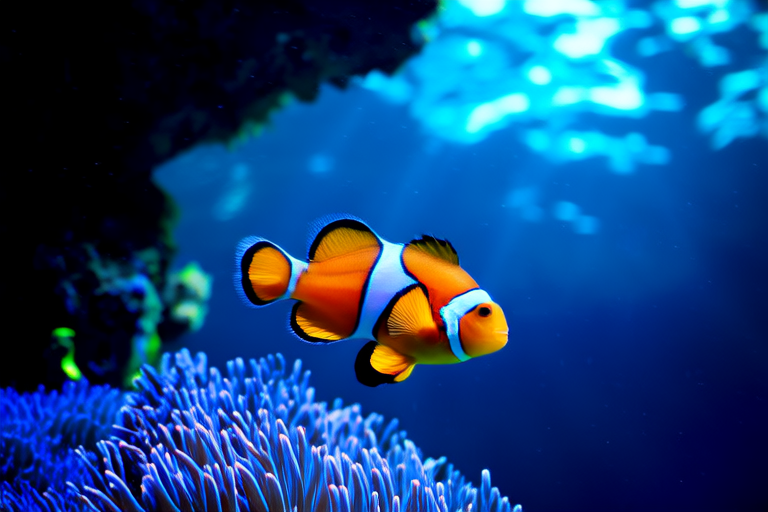From Finding Nemo to Reality: What It’s Really Like to Own a Clownfish
The vibrant orange and white stripes of a clownfish have captured the hearts of many since the release of Disney’s animated film Finding Nemo. The movie portrays clownfish as carefree, adventurous creatures living in a perfect underwater world. However, owning a clownfish as a pet is far more complex than what is depicted on the big screen. This article will guide you through the realities of clownfish ownership, providing essential information on tank conditions, diet, behavior, and the responsibilities involved.
Contrasting Media Portrayals with Realities
In Finding Nemo, clownfish appear as friendly, outgoing characters who swim effortlessly alongside their sea anemone hosts. While these elements are true to life, they are often idealized in media, overlooking the challenges and complexities of keeping a clownfish in captivity. In reality, clownfish require specific environmental conditions and careful attention to thrive as pets.
Tank Conditions for Health
To ensure a healthy environment for your clownfish, it’s crucial to set up an appropriate aquarium with the right water parameters and filtration systems. Clownfish prefer saltwater tanks with temperatures between 74°F and 82°F (23°C to 28°C). The pH level should be maintained between 8.1 and 8.4, and salinity should be kept at approximately 1.020 to 1.025.
Proper filtration is essential to maintain water quality. A high-quality filter that can handle biological, mechanical, and chemical filtration is recommended. Regular water changes, typically 10-20% every week, help to keep the tank clean and free from harmful substances.
When choosing tank mates for your clownfish, it’s important to select compatible species. Clownfish are generally peaceful and can coexist with other non-aggressive fish, such as damsels, tangs, and wrasses. However, it’s crucial to avoid placing them with larger, predatory fish that may see them as prey.
Diet and Feeding Routines
Clownfish are omnivorous, meaning they eat both plant and animal matter. A balanced diet should include a variety of foods, such as flakes, pellets, frozen or live brine shrimp, and finely chopped seafood. It’s important to feed them small portions several times a day rather than one large meal. Overfeeding can lead to poor water quality and health issues.
Clownfish have a natural tendency to search for food, so scattering food throughout the tank can encourage this behavior. This also helps prevent overfeeding any single area of the tank.
Social Behavior and Interaction with Sea Anemones
Clownfish are naturally social animals that tend to live in pairs or small groups. In the wild, they form symbiotic relationships with sea anemones, which provide shelter and protection from predators. In captivity, it’s possible to replicate this relationship by introducing a suitable sea anemone to the tank.
Choosing the right sea anemone is crucial, as not all species are compatible with clownfish. Popular options include the bubble tip anemone and the carpet anemone. It’s important to acclimate the anemone slowly to the tank’s water conditions to avoid shocking it. Once established, the anemone can provide a safe haven for your clownfish, encouraging natural behaviors.
Selecting Healthy Clownfish
When selecting a clownfish from a breeder or pet store, look for signs of good health. Healthy clownfish should have clear eyes, smooth skin, and active swimming patterns. Avoid fish with cloudy eyes, torn fins, or visible parasites. Additionally, observe the tank conditions; a clean, well-maintained tank is a good indicator of the store’s standards.
Long-Term Commitment and Joys of Caring for Clownfish
Owning a clownfish is a long-term commitment that requires dedication and responsibility. Proper care ensures that your clownfish will live a long and healthy life, potentially up to ten years. The joy of watching these fascinating creatures grow and interact within their environment can be deeply rewarding.
As a clownfish owner, you play a vital role in creating a safe and enriching habitat for your pets. By understanding their needs and providing the best possible care, you can enjoy the beauty and complexity of these remarkable fish.
While Finding Nemo may have sparked your interest in clownfish, owning one requires more than just a love for the movie. With the right knowledge and commitment, however, the experience of caring for a clownfish can be incredibly fulfilling. Remember, the happiness and health of your clownfish depend on your dedication to their well-being.
